The ancient Persian city of Persepolis can be dated back to at least 515 BC. Persepolis was then the capital of the Persian Achaemenid Empire. At its greatest extent, the Empire occupied an area bound by Greece, Egypt and parts of Libya to the west . In the east it stretched into modern Pakistan, Afghanistan, Turkmenistan and Uzbekistan.
As a history lover there was no way I was going to miss Persepolis while in Iran. On my first night in Shiraz I met a lovely Australian woman named Ellen. I found out that she had organised to go on a tour of Persepolis the following morning. The cost of the tour was 28€. I did a bit of math in my head and realised that if I tried to visit Persepolis and the Necropolis on my own, the minimum I would pay would be 20€ (10€ entrance fees and 10€ transport). Given that the hostel’s organised tour included door to door transport and an english speaking guide, it was a bit of a no-brainer. It also meant I would be able to make the visit with a few other travellers which tends to always be more enjoyable than visiting these places on your own.
The first stop on our tour was to the Necropolis, better known perhaps as Naqsh-e Rustam. I must confess that I had never heard of this place up until the morning of the tour. But I had certainly heard of the people interred within!
The three rock-cut tombs visible here from left to right contain the Persian kings Darius II, Artaxerxes I and Darius I (Darius the Great). Located just of to the right and out of frame, but visible in the following photo, is the tomb of Xerxes I.
These four kings combined to rule over Persia for a total of 114 years. Interestingly there was one other king who ruled during this time in Persia. He did so however for only 45 days and he was Xerxes II. Xerxes II was the son of Artaxerses I (2nd tomb from left) and he inherited the crown upon the death of his father. Only to be assassinated by his half-brother, Sogdianus. Sogdianus reigned for six short months himself before being captured and executed by his other half-brother, Ochus. Ochus later became known as Darius II (first tomb). A fascinating period in Persian history and, by the sounds of it, as interesting as any Game of Thrones plot line. Darius II was succeeded by Artaxerxes II and then Artaxerxes III. More on their tombs later!
There are several fantastically preserved rock reliefs carved into the rock face below the tomb entrances. All in all, it is definitely worth a visit to the Necropolis. I think we spent about 50 min all up at the Naqsh-e Rustam acropolis.
Next stop was Persepolis itself. The ruins of Persepolis are principally located on the top of a raised terrace. To reach the terrace you walk the Grand Staircase. The Grand Staircase consists of two mirrored but identical staircases. Both staircases contain two flights and at the point they meet sits the The Gate of All Nations.
The Gate of All nations included a grand hall that was a square of approximately 25 metres. The columns at its entrance each included a Lamassu, a picture of which is below.
Moving on from the Gate of All Nations, the next two areas of Persepolis to view are often the Apadana followed by the Tachara. In the foreground of this next photo you can see some of the columns of the Apadana as well as the relatively well preserved ruins of the Tachara in the background.
The next few photos are a some closer up shots of the Tachara complex. The Tachara was also known as the Palace of Darius the Great, whose tomb I saw earlier in the day.
Wikipedia has on their page an artist’s impression of what the Tachara probably looked like. You can find it here. I always find it interesting to see how colourful these ruins would have been before they deteriorated. We assume that the bare marble and rock we see now is the style that these buildings have always been in, but it’s not the case. Most of these palace like buildings in the ancient empires were painted in blue, red, gold and green. I have always found the artistic impressions of what the Parthenon might have looked like particularly interesting.
There are several more rock-cut tombs at Persepolis itself, very similar to the ones I visited earlier at Naqsh-e Rustam. It is believed that these tombs were the final resting places of Artaxerxes II and Artaxerxes III. These two were the son and grandson respectively of Darius II, the same Darius mentioned previously. To try to piece all of this in to chronological order visit here.
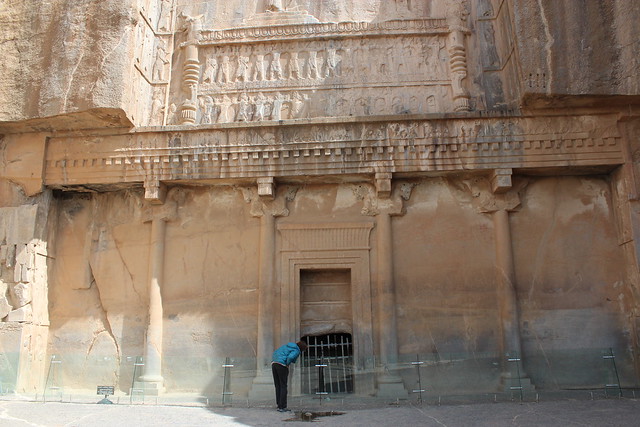
Photo courtesy of Ellen from travellingtheworldsolo.com/.
Me checking out the tomb of Artaxerxes III a little closer.
One final photo. A panorama I took using the google streetview app. Technically it’s a 360 degree photo but I haven’t added functionality to display them here yet. Still, it gives a decent overview of the Persepolis ruins.

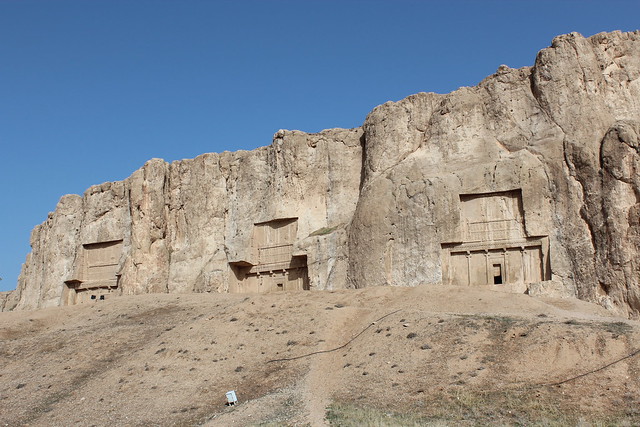
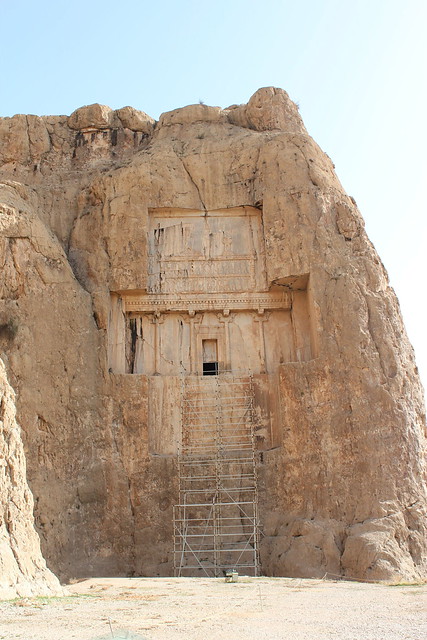
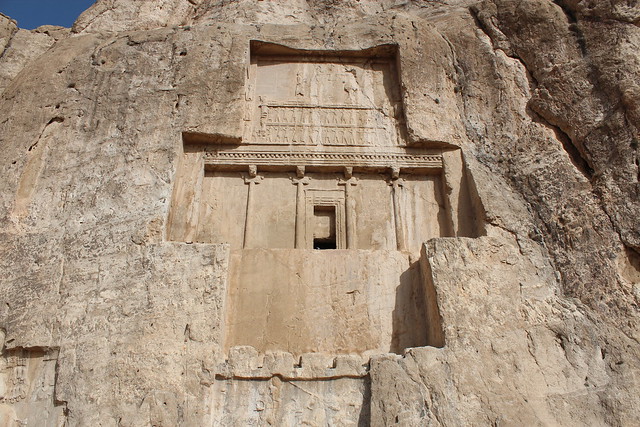
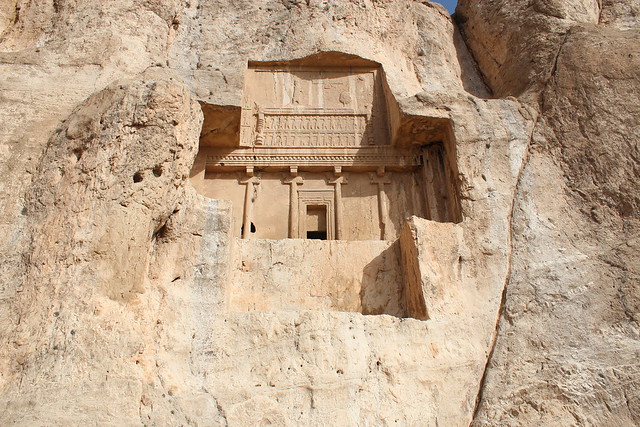
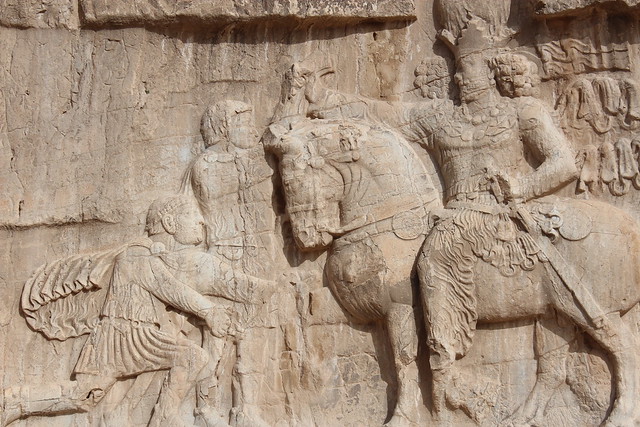
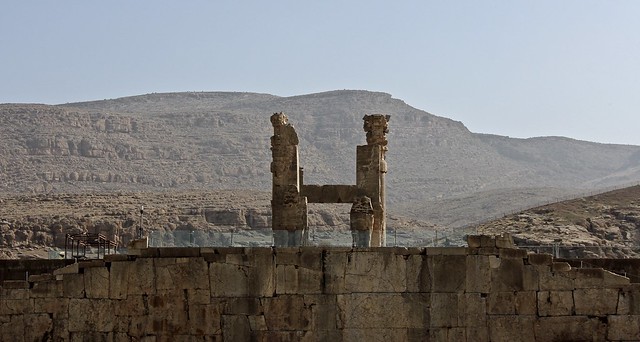
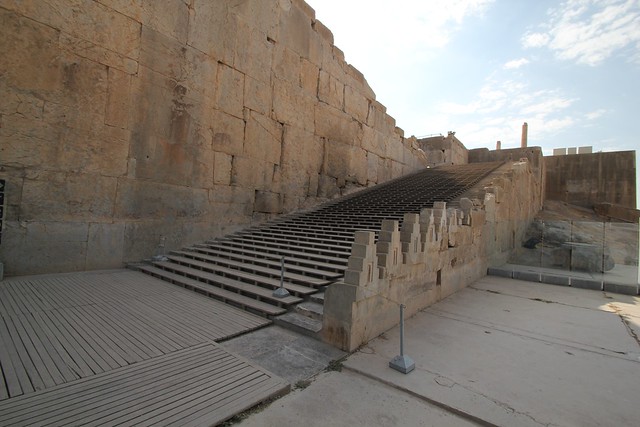
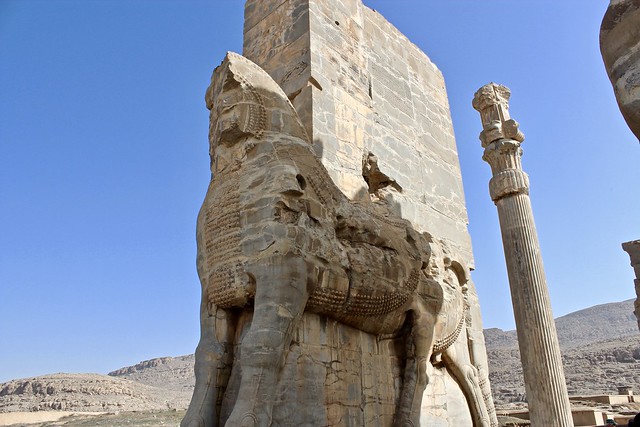
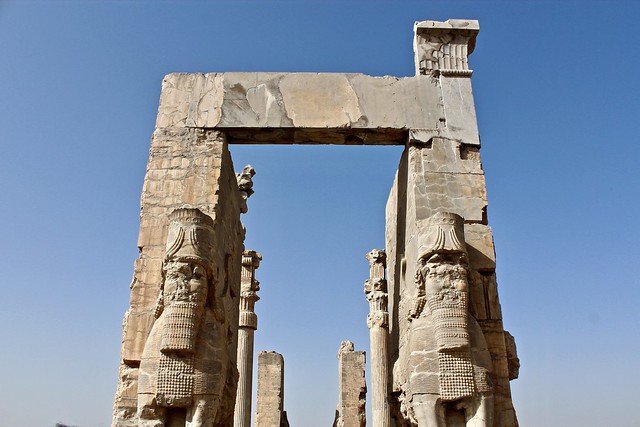
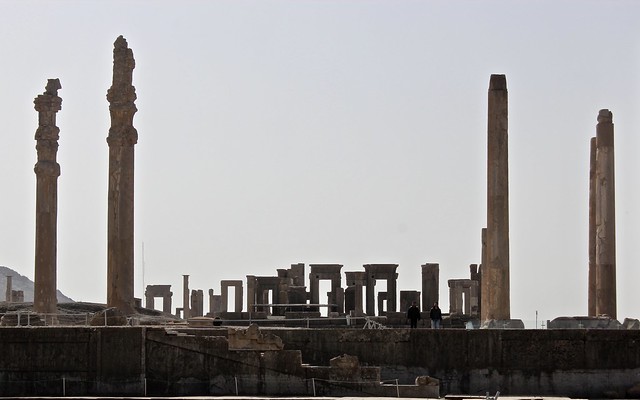
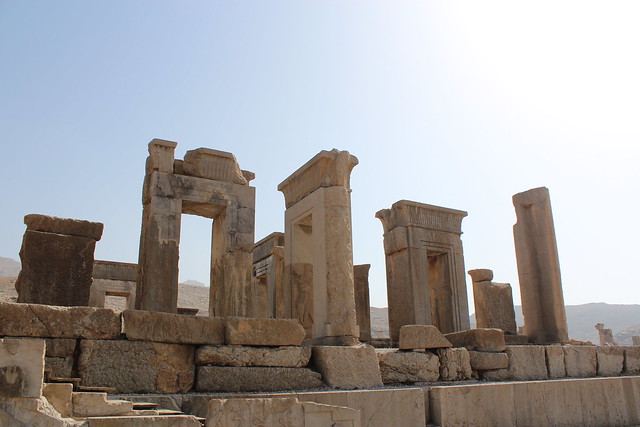
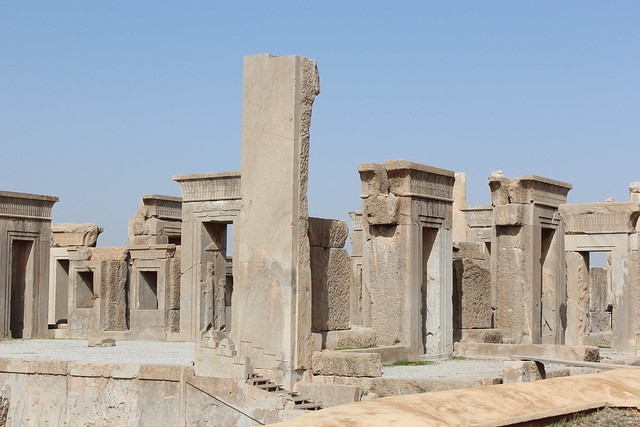
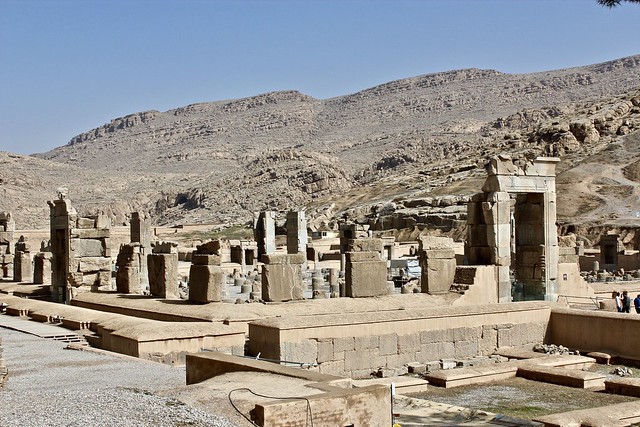
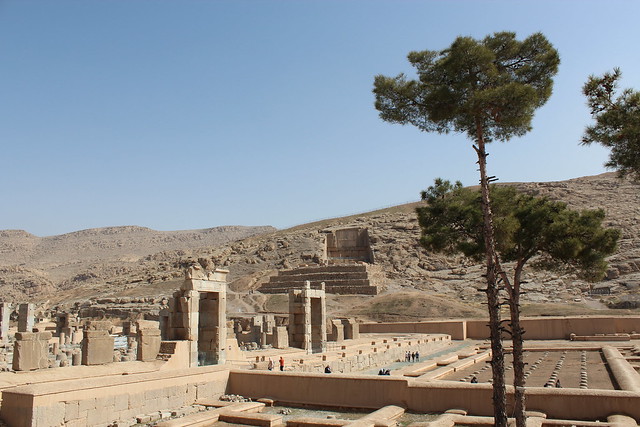
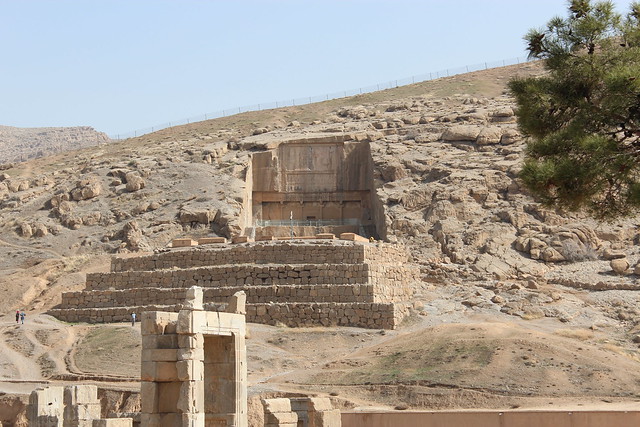
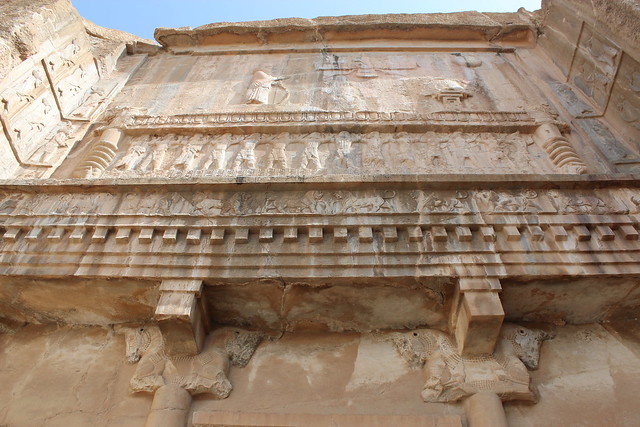
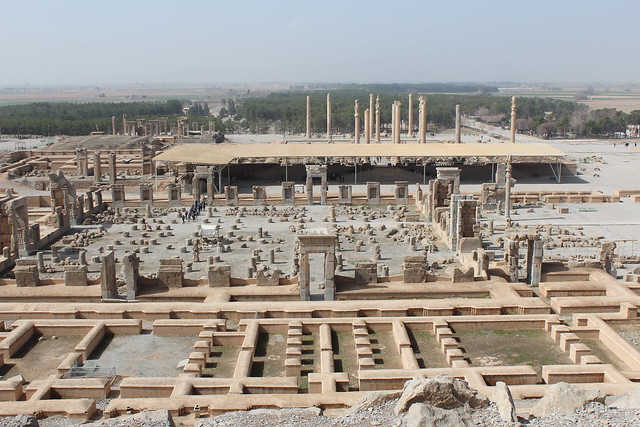
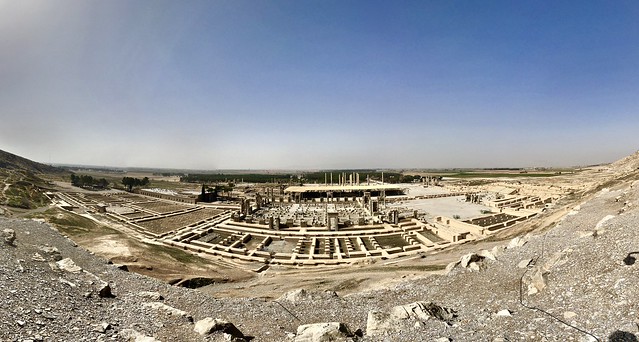

2 comments
Comment by Venus Goon
Venus Goon May 13, 2017 at 6:22 am
Hi Hayden, may I ask is it easy to hire a private taxi to PERSEPOLIS, NECROPOLIS & PASARGADAE? I would like to make a trip there.
Do U have any idea is the taxi just drop off of they are chartered for a few hours?
Comment by Hayden
Hayden May 14, 2017 at 8:05 pm
Yes it is very easy. Almost every accommodation has their own taxi drivers that offer this service and every taxi driver from the street will offer a similar service. Just remember when negotiating that Niayesh hostel offers a tour that visits both the Necropolis and Persepolis. The total cost is 25 USD and this includes 10 USD worth of entry fees. This effectively means you are paying 15 USD for transport and also a guided tour. It will be difficult to beat this price with private taxi I think.
It is definitely possible to arrange for the taxi to wait for you at each stop. If you want a taxi driver to wait for you an any particular place you can expect them to charge about 5 USD/hour for this service.